Term limit
A term limit is a legal restriction that limits the number of terms an officeholder may serve in a particular elected office. When term limits are found in presidential and semi-presidential systems they act as a method to curb the potential for monopoly, where a leader effectively becomes "president for life". This is intended to protect a democracy from becoming a de facto dictatorship. Sometimes, there is an absolute limit on the number of terms an officeholder can serve, while, in other cases, the restrictions are merely on the number of consecutive terms.
History
Ancient
Term limits have a long history. Ancient Greece and Ancient Rome, two early civilizations which had elected offices, both imposed limits on some positions.
In ancient Athenian democracy, only offices selected by sortition were subject to term limits (one term of one year for each office, except members of the council of 500 (boule), where it was possible to serve two one-year terms, non-consecutively). Elected offices were all subject to possible re-election, although they were minoritarian, these positions were more prestigious and those requiring the most experience, such as military generals and the superintendent of springs.
In the Roman Republic, a law was passed imposing a limit of a single term on the office of censor. The annual magistrates—tribune of the plebs, aedile, quaestor, praetor, and consul—were forbidden reelection until a number of years had passed.[1] (see cursus honorum, Constitution of the Roman Republic). Also there was a term limit of 6 months for a dictator.
Modern
Many modern presidential republics employ term limits for their highest offices. The United States placed a limit of two terms on its presidency by means of the 22nd Amendment to the Constitution in 1951. There are no term limits for Vice Presidency, Representatives and Senators, although there have been calls for term limits for those offices. Under various state laws, some state governors and state legislators have term limits. Formal limits in America date back to the 1682 Pennsylvania Charter of Liberties, and the colonial frame of government of the same year, authored by William Penn and providing for triennial rotation of the provincial council, the upper house of the colonial legislature.[2] (See also term limits in the United States).
The Russian Federation has a rule for the head of state that allows the President of Russia to serve more than two terms if not consecutive (as in the case of Vladimir Putin). For governors of federal subjects, the same two-term limit existed until 2004, but now there are no term limits for governors.
Term limits are also common in Latin America, where most countries are also presidential republics. Early in the last century, the Mexican revolutionary Francisco Madero popularized the slogan Sufragio Efectivo, no Reelección (effective suffrage, no reelection). In keeping with that principle, members of the Congress of Mexico (the Chamber of Deputies and Senate) cannot be reelected for the next immediate term under article 50 and 59 of the Constitution of Mexico, adopted in 1917. Likewise, the President of Mexico is limited to a single six-year term. This makes every presidential election in Mexico a non-incumbent election.
Countries that operate a parliamentary system of government are less likely to employ term limits on their leaders. This is because such leaders rarely have a set "term" at all: rather, they serve as long as they have the confidence of the parliament, a period which could potentially last for life. Many parliaments can be dissolved for snap elections which means some parliaments can last for mere months while others can continue until their expiration dates. Nevertheless, such countries may impose term limits on the holders of other offices—in republics, for example, a ceremonial presidency may have a term limit, especially if the office holds reserve powers.
Types
Term limits may be divided into two broad categories: consecutive and lifetime. With consecutive term limits, a legislator is limited to serving a particular number of years in that particular office. Upon hitting the limit in one office or chamber, a legislator may run for election to the other chamber or leave the legislature. After a set period of time (usually two years), the clock resets on the limit, and the legislator may run for election to his/her original seat and serve up to the limit again.
With lifetime limits, once a legislator has served up to the limit, she/he may never again run for election to that office. Lifetime limits are much more restrictive than consecutive limits.
Notable examples
Relaxed term limits
| Names indexed by surnames | Image | Countries and localities | Official positions | Earlier term limits | Later term limits |
|---|---|---|---|---|---|
| Bloomberg, Michael | 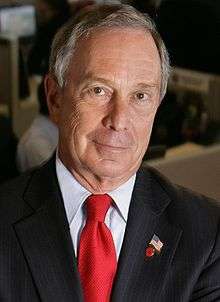 | United States; New York City | Mayor (2002–2013) | 2 terms of 4 years | 3 terms of 4 years from 2008 to 2010; 2 terms of 4 years since 2010 |
| Cardoso, Fernando Henrique | 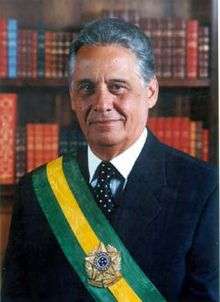 | Brazil | President of Brazil (1995–2003) | 1 term of 4 years | 2 terms of 4 years since 1997 |
| Chávez, Hugo | .jpg) | Venezuela | President of Venezuela (1999–2013) | 2 terms of 6 years | Unlimited terms of 6 years since the 2009 amendment of the 1999 Venezuelan constitution |
| Clinton, Bill |  | United States; Arkansas | Governor of Arkansas (1979–1981, 1983–1992) | 2 consecutive terms of 2 years | 2 consecutive terms of 2 years until 1986, then 2 consecutive terms of 4 years |
| Chiang Kai-shek |  | China, Republic of (Mainland and Taiwan Eras) | President (1948–1949, 1950–1975) | 2 terms of 6 years | Unlimited terms of 6 years since 1960[3] |
| Menem, Carlos |  | Argentina | President of Argentina (1989-1999) | 1 term of 6 years, re-eligible after 6 years | 2 terms of 4 years, re-elegible after 4 years; Menem was banned to reelection in 1999 because his first term was counted as one of 4 |
| Museveni, Yoweri | 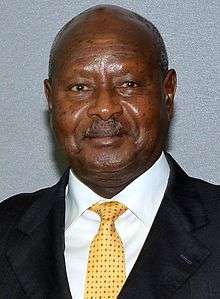 | Uganda | President of Uganda (1986–present) | 2 terms of 5 years | Served 2 terms of 5 years before 1995 constitution imposed 2-term limit. Served 2 additional terms of 5 years; constitution was revised in 2005, removing term limits |
| Patton, Paul E. |  | United States; Kentucky | Governor of Kentucky (1995-2003) | 1 term of 4 years | 2 terms of 4 years |
| Perón, Juan Domingo |  | Argentina | President of Argentina (1946-1955, 1973-1974) | 1 term of 6 years, re-eligible after 6 years | Unlimited terms of 6 years. In 1973 he was elected to 1 term of 4 years. |
| Putin, Vladimir |  | Russia | President of Russia (1999-2008, 2012–present) | 2 terms of 4 years | 2 terms of 6 years since 2008 |
| Rahmon, Emomali | 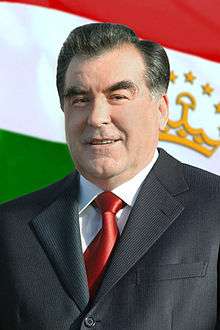 | Tajikistan | President of Tajikistan (1994–present) | 1 terms of 5 years | 1 term of 7 years since 1999, 2 terms of 7 years since 2003, term count reset in 2006, all term limits removed in 2016.[4][5] |
| Sharif, Nawaz |  | Pakistan | Prime Minister of Pakistan (1990–93, 1997–99, 2013–present) | 2 terms of 5 years | Unlimited terms of 5 years since 2011 |
| Uribe, Álvaro | .jpg) | Colombia | President (2002–2010) | 1 term of 4 years | 2 terms of 4 years since 2004 |
| Yuan Shikai |  | China, Republic of (Beiyang Government) | President (1912–1915, 1916) | 2 terms of 5 years[6] | Unlimited terms of 10 years since 1914[7] |
Tightened term limits
| Names indexed by surnames | Image | Countries and localities | Official positions | Earlier term limits | Later term limits |
|---|---|---|---|---|---|
| Brown, Jerry | 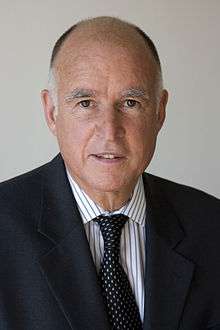 | United States; California | Governor (1975-1983) (2011-present) | no term limit | 2 terms of 4 years |
| Castro, Raúl | 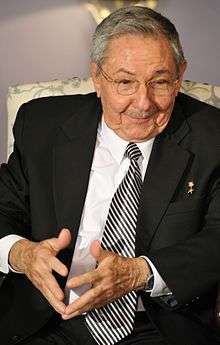 | Cuba | President of Cuba (2008–present) | No term limit | 2 terms of 5 years since 2013 |
| dos Santos, José Eduardo |  | Angola | President of Angola (1979–present) | No term limit | 2 terms of 5 years since 2010 |
| Mugabe, Robert | 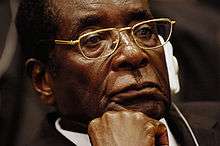 | Zimbabwe | President of Zimbabwe (1987–present) | No term limit | 2 terms of 5 years since 2013 |
| Sall, Macky | 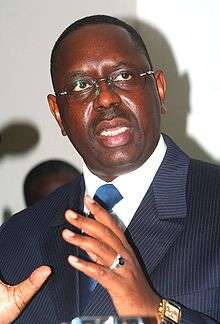 | Senegal | President of Senegal (2012–present) | 2 terms of 7 years | 2 terms of 5 years since 2016 |
| Santos, Juan Manuel | .jpg) | Colombia | President of Colombia (2010-present) | 2 terms of 4 years | 1 term of 4 years since 2018 |
People who would have run afoul of modern term limits
| Names indexed by surnames | Image | Countries and localities | Official positions | Earlier term limits | Later term limits |
|---|---|---|---|---|---|
| Mitterrand, François | .jpg) | France | President of France (1981–1995) | No term limit | 2 terms of 5 years since 2008 |
| Roosevelt, Franklin Delano |  | United States | President of the United States (1933–1945) | No term limit | 2 terms of 4 years since 1951 |
| Suharto | 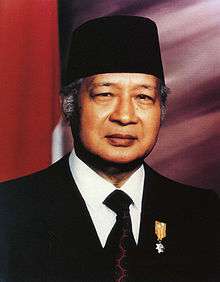 |
Indonesia | President of Indonesia (1968–1998) | No term limit | 2 terms of 5 years since 1999 |
See also
References
- ↑ Robert Struble, Jr., Treatise on Twelve Lights, chapter six, part II, "Rotation in History."
- ↑ Francis N. Thorpe, ed., The Federal and State Constitutions, Colonial Charters, and other Organic Laws..., 7 vols. (Washington, D.C.: Government Printing Office, 1909) 5:3048, 3055-56, 3065.
- ↑ Based on the amended Temporary Provisions Effective During the Period of Communist Rebellion until it was abolished in 1991.
- ↑ Konstantin Parshin (23 April 2013). "Tajikistan: Can Rahmon Keep Running?". Eurasianet. Retrieved 23 May 2016.
- ↑ Peter Leonard (23 May 2016). "Tajikistan Vote Allows President to Rule Indefinitely". ABC News. Retrieved 23 May 2016.
- ↑
- ↑
External links
- Real Term Limits: Now More Than Ever, an article by Doug Bandow in favor of term limits.
- Legislative Term Limits: An Overview, Term-Limits Information from the National Conference of State Legislatures.